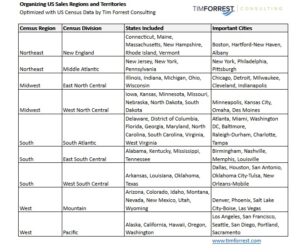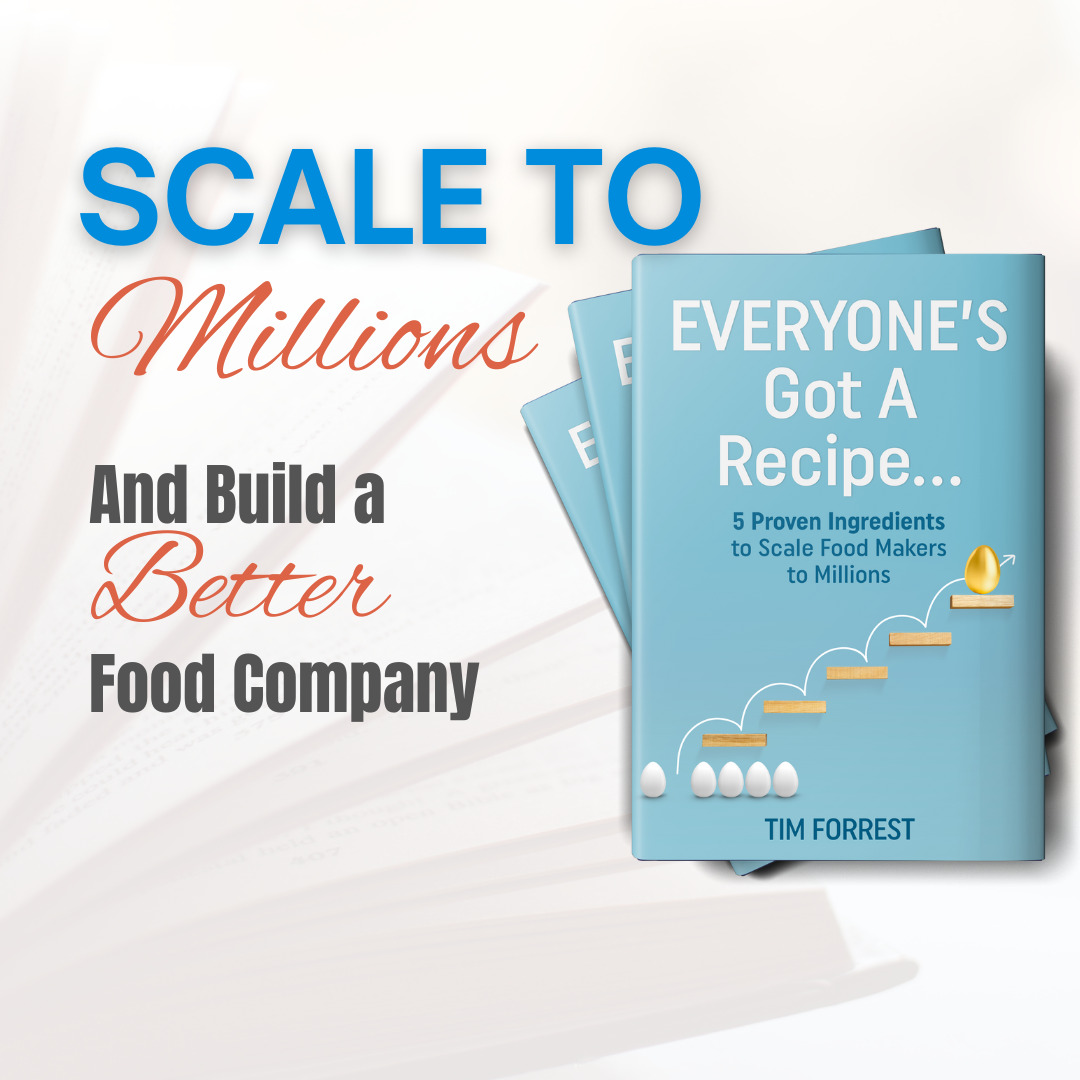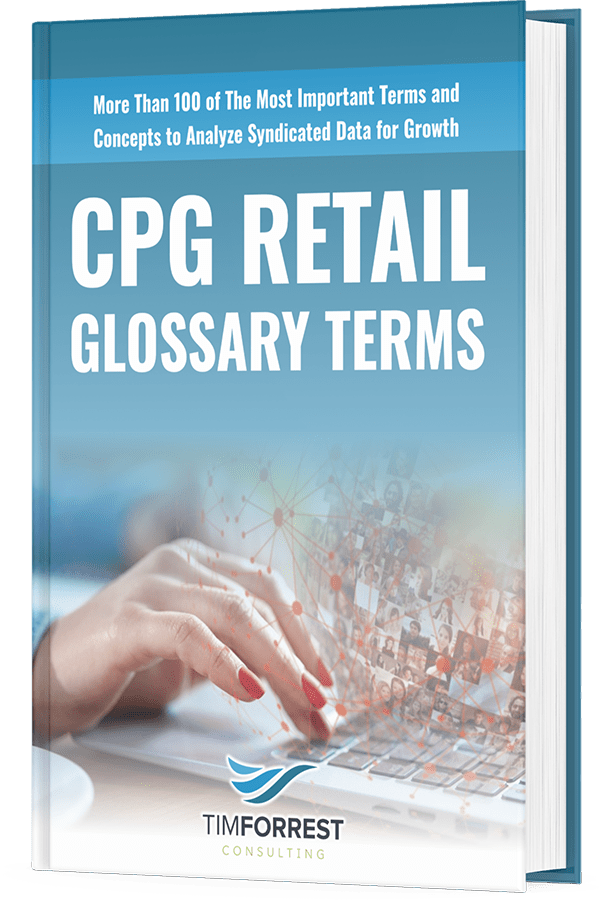How to Harness U.S. Census Data to Masterfully Organize Your Food Brand’s Sales Across America
Introduction
The U.S. food market is a labyrinth of opportunities and challenges. To navigate it successfully, you need more than just a great product—you need data-driven insights. U.S. Census data offers a wealth of information that can help you organize your sales efforts with precision. This guide will provide you with a comprehensive framework, breaking down the U.S. market into regions, divisions, and states, to help you tailor your sales strategies effectively.
Why Census Data is Your Secret Weapon
The U.S. Census Bureau collects a plethora of data that can be invaluable for food brands. From demographics to economic indicators, this data can serve as the backbone of your sales and marketing strategy, helping you identify lucrative markets and consumer trends.
Organizing Your USA Geography Sales Market Area
USA Regions and Divisions
Consumer Product and Food Companies often segment the U.S. market into two sets of sub-national areas: 9 census divisions nested within 4 census regions. Here’s a detailed breakdown:
The Northeast Region
- New England Division: Connecticut, Maine, Massachusetts, New Hampshire, Rhode Island, Vermont
- Middle Atlantic Division: New Jersey, New York, Pennsylvania
The Midwest Region
- East North Central Division: Illinois, Indiana, Michigan, Ohio, Wisconsin
- West North Central Division: Iowa, Kansas, Minnesota, Missouri, Nebraska, North Dakota, South Dakota
The South Region
- South Atlantic Division: Delaware, District of Columbia, Florida, Georgia, Maryland, North Carolina, South Carolina, Virginia, West Virginia
- East South Central Division: Alabama, Kentucky, Mississippi, Tennessee
- West South Central Division: Arkansas, Louisiana, Oklahoma, Texas
The West Region
- Mountain Division: Arizona, Colorado, Idaho, Montana, Nevada, New Mexico, Utah, Wyoming
- Pacific Division: Alaska, California, Hawaii, Oregon, Washington
Important Nielsen Metropolitan Areas within Regions
These metropolitan areas are key markets that can be the focus of your targeted sales strategy:
- Albany, Atlanta, Baltimore, Birmingham, Boston, Buffalo/Rochester, Charlotte, Chicago, Cincinnati, Cleveland, Columbus, Dallas, Denver, Des Moines, Detroit, Grand Rapids, Hartford-New Haven, Houston, Indianapolis, Jacksonville, Kansas City, Las Vegas, Little Rock, Los Angeles, Louisville, Memphis, Miami, Milwaukee, Minneapolis, Nashville, New Orleans-Mobile, New York, Oklahoma City-Tulsa, Omaha, Orlando, Philadelphia, Phoenix, Pittsburgh, Portland, Raleigh-Durham, Richmond-Norfolk, Sacramento, Salt Lake City-Boise, San Antonio, San Diego, San Francisco, Seattle, St Louis, Syracuse, Tampa, Washington DC, West Texas
We’ve taken the Census regions, divisions, states, and important markets and organized them into a document for your use and download. LINK
LINK TO EXCEL SPREADSHEET OF CENSUS AREAS
How to Utilize This Data for Sales Optimization
- Sales Regions and Divisions: Utilize Census structure for designing your sales territories and region organization. Nest the states within this structure for better organization and alignment with market efforts.
- Demographic Targeting: Use Census data to identify key demographics that align with your product offerings.
- Geographic Focus: Utilize the regional and divisional breakdown to prioritize your sales efforts.
- Economic Indicators: Leverage economic data to inform your pricing and promotional strategies.
- Competitive Analysis: Use the geographic data as a starting point for a more in-depth competitive analysis.
- Trend Analysis: Keep an eye on Census reports to adapt to emerging consumer behaviors and preferences. Also, compare per capita consumption within regions, states, and divisions to better understand effectiveness.
Conclusion
The U.S. Census data is not just a collection of numbers; it’s a strategic tool that can help you understand the American consumer in unparalleled depth. By leveraging this data, you can craft a sales strategy that is not only effective but also innovative, setting your food brand apart in a crowded marketplace.
Take Action Now!
Ready to transform your food brand with data-driven insights? Book a consultation at www.timforrestmarkets.com to leverage U.S. Census data for unparalleled market insights.





















 We help food entrepreneurs and established companies get their products onto shelves and into the hands of consumers. Through personalized collaboration, you’ll learn to succeed using a proven path of marketing, sales, merchandising, distribution and business growth strategies. We’ve generated over $1 billion in revenue and company valuations for our clients. Let us put our expertise to work for you.
We help food entrepreneurs and established companies get their products onto shelves and into the hands of consumers. Through personalized collaboration, you’ll learn to succeed using a proven path of marketing, sales, merchandising, distribution and business growth strategies. We’ve generated over $1 billion in revenue and company valuations for our clients. Let us put our expertise to work for you.





